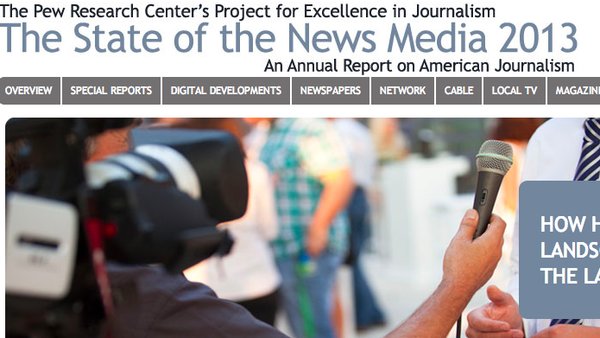Brands
PEW Report Brings Good News For Brand Publishers
The PEW Research Center’s recent annual report on the State of the News Media is fascinating for any journalism junkie, but even more fascinating for brand publishers.
At the core of the PEW report are the ramifications of the decline in news coverage. Newspaper newsrooms have 30% fewer reporters than in 2000, which corresponds with 31% of US adults that have stopped turning to a news outlet because it no longer provided them with the news they were accustomed to getting.

This presents an opportunity for brand publishers. PEW writes:
“While traditional newsrooms have shrunk, however, there are other new players producing content that could advance citizens’ knowledge about public issues.”
“They are covering subject areas that would have once been covered more regularly and deeply by beat reporters at traditional news outlets—areas such as health, science and education.”
PEW cites how some brands are seeing their publishing efforts carried by major news outlets. Kaiser Health News, produced by The Kaiser Health Foundation, sees its articles carried by news outlets like The Washington Post with direct attribution. Similarly, insidescience.org, created by the American Institute of Physics, has stories on NBC.com, with a lead-in identifying the source.
The report also notes our very own Contently for its innovative efforts to connect journalists with brand publishers to create original content:
“In circumventing the media altogether, one company, Contently, connects thousands of journalists, many of them ex-print reporters, with commercials brands to help them produce their own content, including brand-oriented magazines.”
Brand publishing has perhaps seen its quickest and most impactful growth in sponsored ads and posts, as publishers have begun to integrate brand-produced content alongside its regular content, delivering what publishers and marketers call “native advertising.”
The report states:
“Though it remains small in dollars, the category’s growth rate is second only to that of video. Sponsorship ads rose 38.9%, to $1.56 billion; that followed a jump of 56.1% in 2011.”
“Traditional publications such as The Atlantic and Forbes, as well as digital publications BuzzFeed and Gawker, have relied on native ads to quickly build digital ad revenues, and their use is expected to spread. According to tech website PandoDaily, major publishers including Hearst, Time and Condé Nast are investing in formats to run native ads, as are many newspapers.”
PEW warns that this “development, however, runs the risk of confusing readers about the difference between advertising and news content,” such as when The Atlantic ran a misguided advertorial for The Church of Scientology. Though most publishers do a good job of marking sponsored content, this confusion and the appropriateness of sponsored content needs to be something that publishers and brand marketers need to constantly consider.
Perhaps most encouraging for brand publishers is how much word-of-mouth—primarily via social media—drives news consumption:
“For nearly three-quarters of adults (72%), the most common way to get news from friends and family is by having someone talk to them—either in person or over the phone.”
“And among that group, close to two-thirds (63%) somewhat or very often seek out a news story about that event or issue. Social networking is now a part of this process as well: 15% of U.S. adults get most of their news from friends and family this way, and the vast majority of them (77%) follow links to full news stories. Among 18-to-29 year-olds, the percentage that primarily relies on social media for this kind of news already reaches nearly one-quarter.”
This is undoubtedly good news for brand publishers. If you create great, reported content that your audience wants to share, their friends and family will consume that content, and your audience will grow. Simultaneously, there’s less great reporting to compete with as traditional news outlets’ resources dwindle.
The entire report is a must-read, as there are many more implications to consider, such as how the decline of local TV news could create video news opportunities for the right brands. It paints a troubling picture for traditional news outlets, but within that landscape, brand publishers have to recognize the opportunity to rise up, scale the publishing cliff, and secure their own piece of the news kingdom.
Get better at your job right now.
Read our monthly newsletter to master content marketing. It’s made for marketers, creators, and everyone in between.




